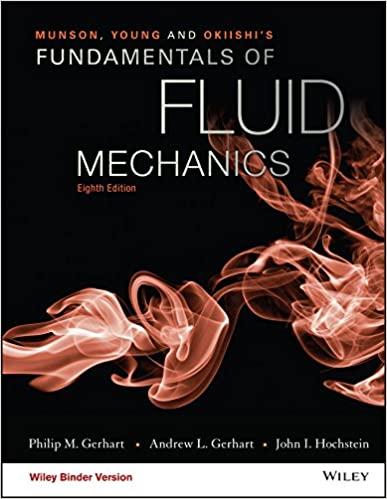Blood (assume (mu=4.5 times 10^{-5} mathrm{lb} cdot mathrm{s} / mathrm{ft}^{2}, S G=1.0) ) flows through an artery
Question:
Blood (assume \(\mu=4.5 \times 10^{-5} \mathrm{lb} \cdot \mathrm{s} / \mathrm{ft}^{2}, S G=1.0\) ) flows through an artery in the neck of a giraffe from its heart to its head at a rate of \(2.5 \times 10^{-4} \mathrm{ft}^{3} / \mathrm{s}\). Assume the length is \(10 \mathrm{ft}\) and the diameter is \(0.20 \mathrm{in}\). If the pressure at the beginning of the artery (outlet of the heart) is equivalent to \(0.70 \mathrm{ft} \mathrm{Hg}\), determine the pressure at the end of the artery when the head is
(a) \(8 \mathrm{ft}\) above the heart,
(b) \(6 \mathrm{ft}\) below the heart. Assume steady flow. How much of this pressure difference is due to elevation effects, and how much is due to frictional effects?
Step by Step Answer:

Munson Young And Okiishi's Fundamentals Of Fluid Mechanics
ISBN: 9781119080701
8th Edition
Authors: Philip M. Gerhart, Andrew L. Gerhart, John I. Hochstein





